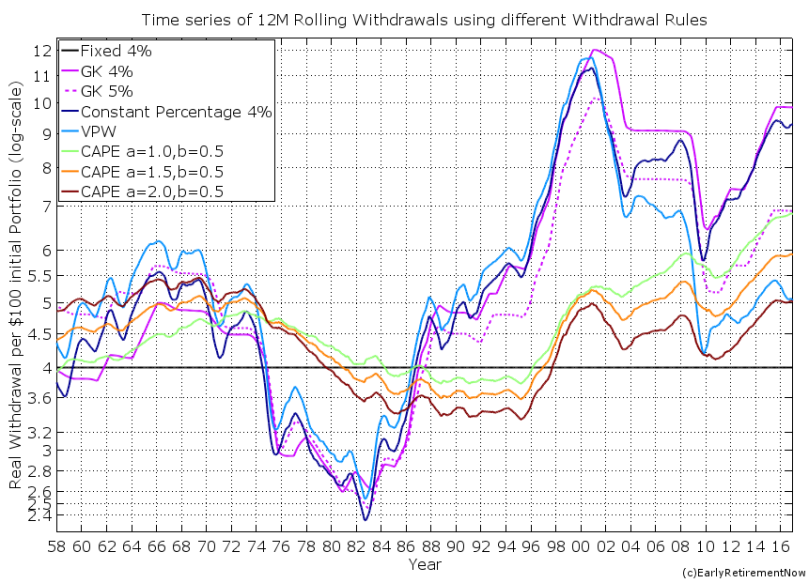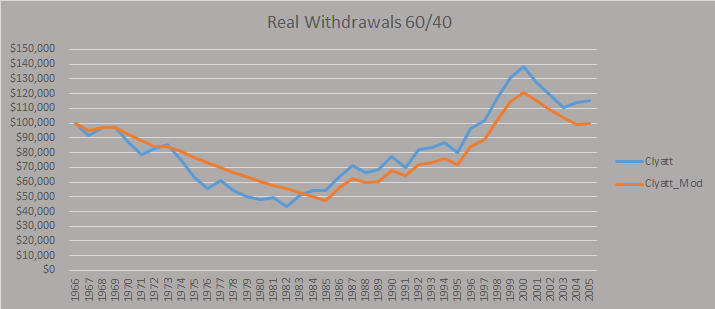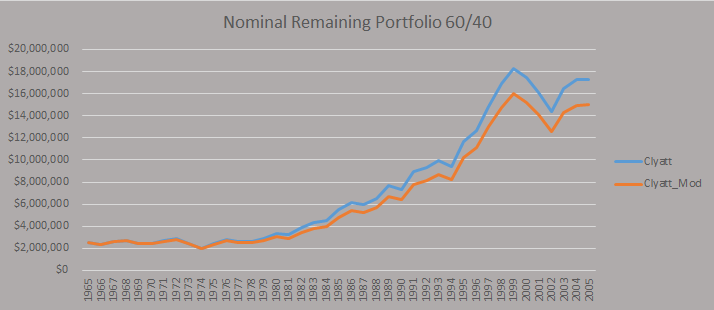Thanks @big-papa. Appreciate it.
OK. Here you go. It turns out I had this analysis stuffed away already. So here's the setup:
Data is from the Simba Spreadsheet over on Bogleheads
This is a 60/40 Portfolio with 60% Total Stock Market (VTSMX) and 40% Intermediate Treasuries. The difference won't be much if you used an SP500 fund and/or a total bond fund.
Clyatt is: 4% of the remaining nominal portfolio or 95% of the previous year's nominal withdrawal, whichever is larger.
Clyatt_Mod is: 4% of the remaining nominal portfolio or 95% of the previous year's real withdrawal, whichever is larger.
First plot is the real withdrawals for both methods.
Second plot is the nominal Remaining portfolio.
Because I had already had this built up, I did it for 40 years.
Results are as I discussed before. In real terms, using 95% real, definitely smooths things over during this timeframe, but there is a small penalty in that you're withdrawing more from your portfolio.
At 30 years, the remaining portfolio for Clyatt is: $11.7M
At 30 years, the remaining portfolio for Clyatt_Mod is: $10.2M
Of course the spending power from both portfolios is significantly less by that time.
For Clyatt, the minimum real withdrawal is: $43.6K
For Clyatt_Mod, the minimum real withdrawal is: 47.7K
The minimum portfolio value for Clyatt is: $2.02M
The minimum portfolio value for Clyatt_Mod is: $1.99M
For withdrawals starting in 1966, Clyatt was back to $100K by 1997
For withdrawals starting in 1966, Clyatt_Mod was back to $100K by 1998
The charts:



